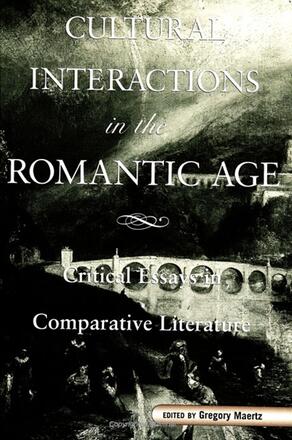
Cultural Interactions in the Romantic Age
Critical Essays in Comparative Literature
Alternative formats available from:
Charts the interactive contours of European culture of the late eighteenth to mid-nineteenth centuries, extending the chronological limits of Romanticism by identifying fresh links among works, authors, contexts, and institutions across national and linguistic borders.
Description
It has been observed that the reevaluation of Romanticism is a special feature of post-New Critical or revisionist criticism in America. Constituting a lively ecumenical dialogue between literary historians and theorists, and between critics based in comparative literature and national literature departments, the essays in Cultural Interactions in the Romantic Age offer abundant proof that this process continues unabated. Focusing on a broad range of interactive relations from 1750 to 1850, these essays reveal as factitious the national and linguistic borders erected within the Academy and strike a blow against the tendency of literary studies to ossify into arbitrary ethnocentric categories. Cultural Interactions in the Romantic Age makes a strong argument for the position that literary activity in the Romantic Period is inseparable from international dialogue and appropriation.
Contributors include April Alliston, Frederick Burwick, Annette Wheeler Cafarelli, James Engell, Lilian R. Furst, David C. Hensley, Roberta Johnson, Marc Katz, Kari Lokke, and John L. Mahoney.
Gregory Maertz is Associate Professor of English at St. John's University.
Reviews
"This book lucidly brings out how the complex cultural matrix of Romantic Europe formed the backdrop for an extraordinary variety of critical negotiations and conversations. Taken together, the essays collected here powerfully illuminate the contours of that rich dialogue, while also reminding us that a genuinely comparativist and revisionist cultural history of Romanticism has yet to be written. What is most attractive about the book is the breadth of its investigation, i. e., the sheer range of texts and cultural contexts that are evoked and intelligently discussed. Moreover, volumes that are truly comparativist are relatively hard to come by these days, making this book a refreshing and enlightening change from the bulk of Romantic scholarship that is intra-cultural in nature. " -- David L. Clark, McMaster University